#but the other verses are mike comparing his relationship with el to his relationship with will
Explore tagged Tumblr posts
Text
(taylor swift music leak)
me: how can i make this about byler.
((wip?))
#i have more of this edit done but i don't love it yet so idk if i will ever post it. but i liked this part#anyway. need is so byler coded. this part and the chorus are will#ok well the chorus can be mike or will but cmon like it's will#'it's a need. it's a need. i would go anywhere that you lead.' is will's el (i) needs you and she (i) always will#but the other verses are mike comparing his relationship with el to his relationship with will#'passion is a passing thing it's ACCIDENTAL chemistry'#that's mike about el. it's a passing thing. accidental. mike calling meeting el 'not fate not destiny just simple dumb luck'#then 'caught up in a feeling it can be deceiving' HELLLOOO? it can be deceiving comp het ok.#then 'this is like breathing for me' is how natural and easy his relationship with WILL is#then straight into the chorus 'oh it's a need' which is. mike and will. mike needing to be needed and will needing him ok.#so i have plans for editing those parts too but like i said i don't love them rn bc i an not an editor yk. but. here's this for now 👍#byler#edit
68 notes
·
View notes
Photo


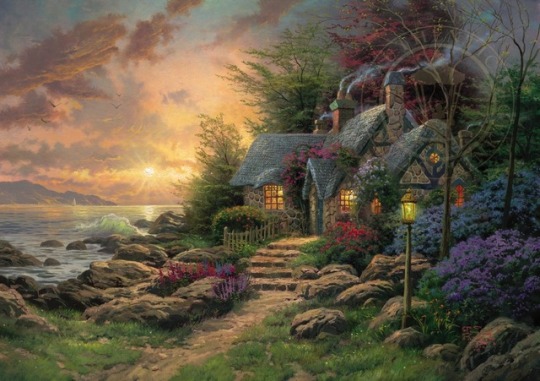

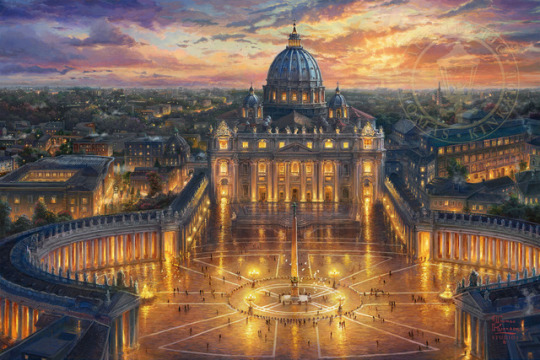


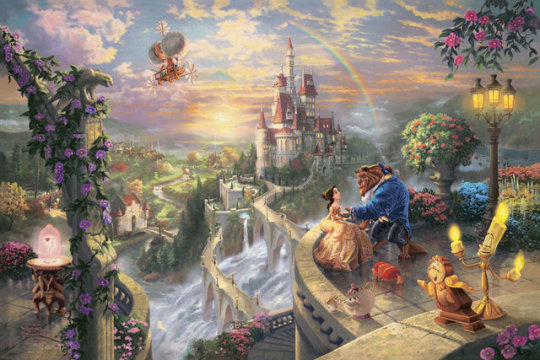





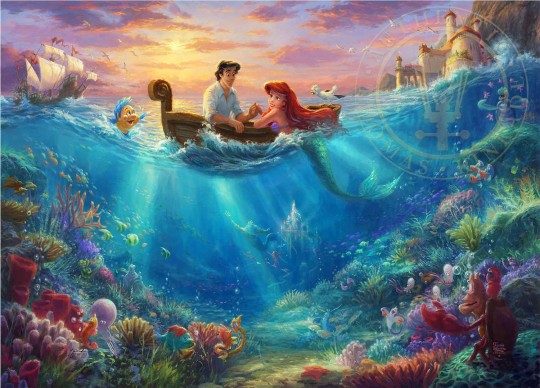

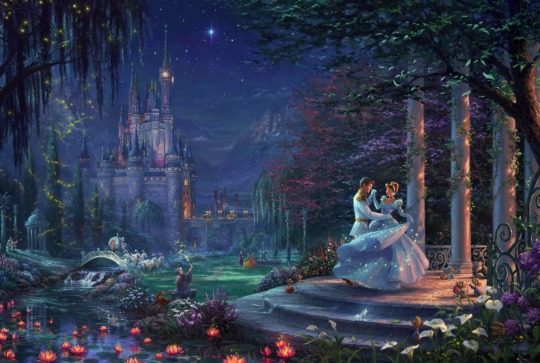
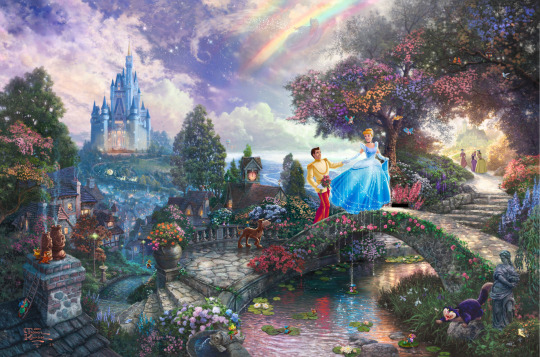
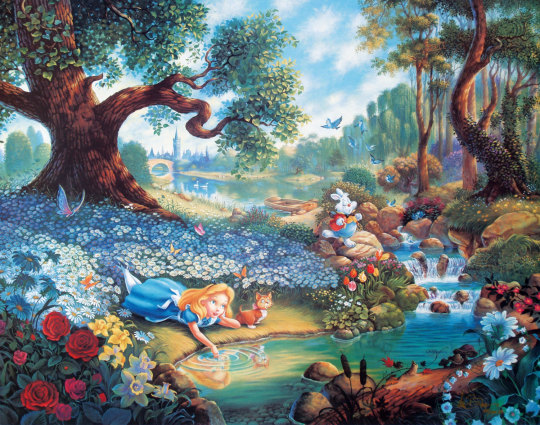
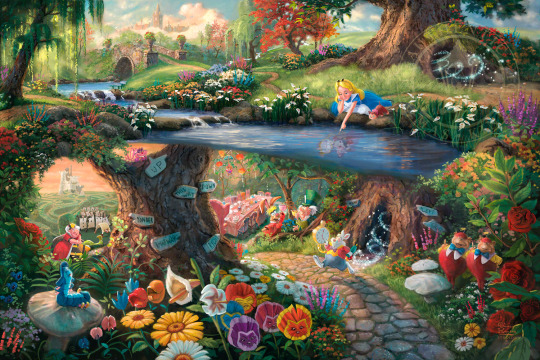



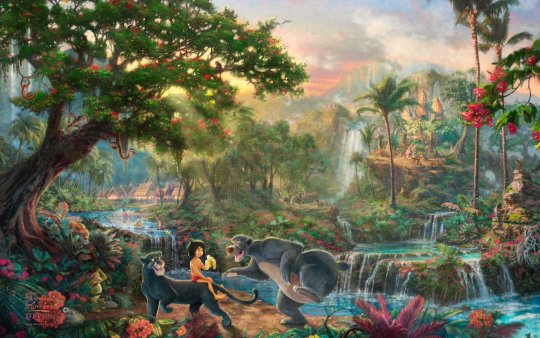
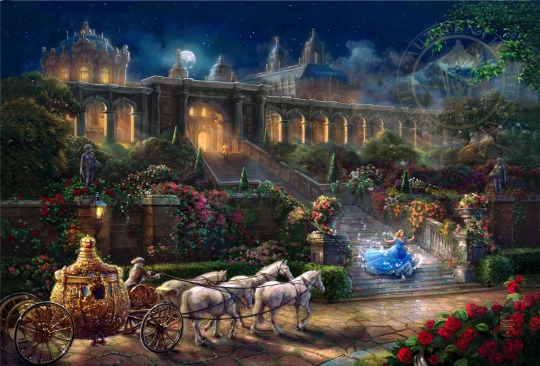
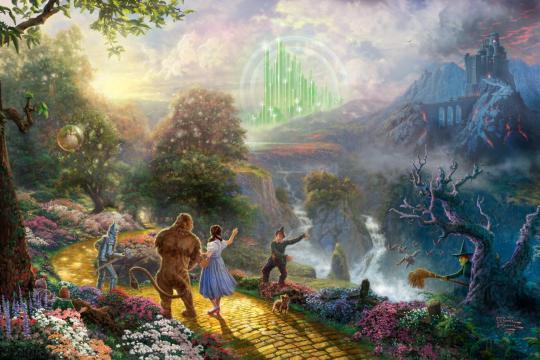

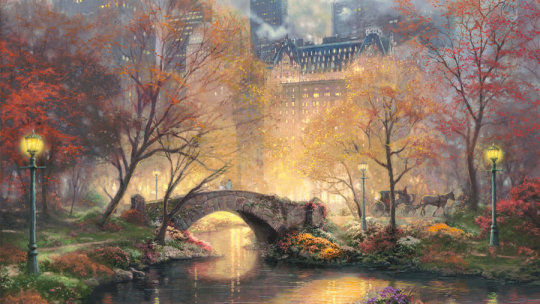

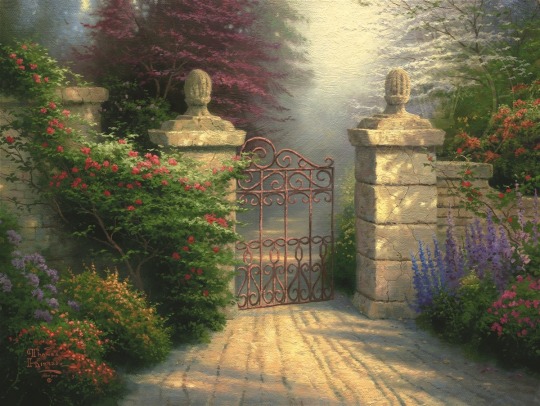
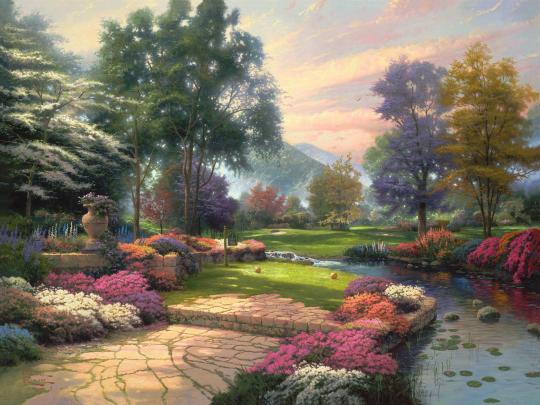
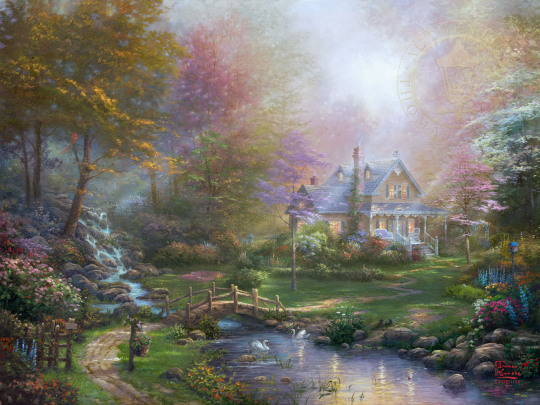
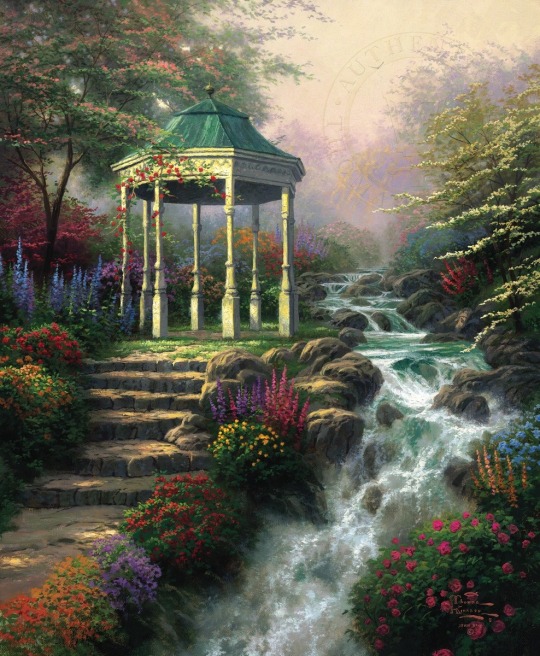

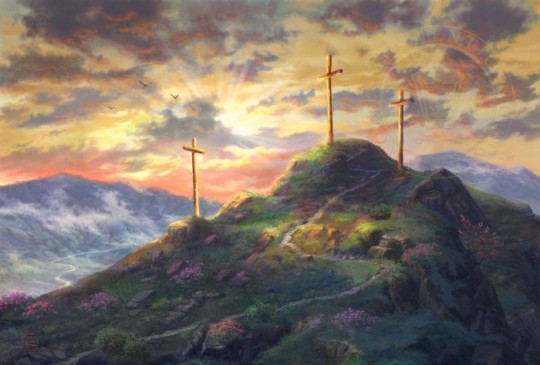

William Thomas Kinkade III
Thomas Kinkade (January 19, 1958, Sacramento, California, United States – April 6, 2012, Monte Sereno, California, United States, aged 54) was an American painter of popular realistic, pastoral, and idyllic subjects. He is notable for the mass marketing of his work as printed reproductions and other licensed products via the Thomas Kinkade Company. He characterized himself as "Thomas Kinkade, Painter of Light", a phrase he protected through trademark but which was originally attributed to the British master J. M. W. Turner (1775–1851). According to Kinkade's company, one in every twenty American homes owns a copy of one of his paintings.
Despite wide commercial success throughout his life, Kinkade is generally held in low esteem by art critics; his pastoral paintings have been described as maudlin and overly sentimental.
He was born on January 19, 1958, in Sacramento County, California. He grew up in the town of Placerville, graduated from El Dorado High School in 1976, and attended the University of California, Berkeley, and the Art Center College of Designin Pasadena. He married Nanette Willey in 1982, and the couple had four daughters: Merritt (b. 1988), Chandler (b. 1991), Winsor (b. 1995) and Everett (b. 1997), all named for famous artists. He and his wife had been separated for over a year before his death in 2012.
Some of the people who mentored and taught Kinkade prior to college were Charles Bell and Glenn Wessels. Wessels encouraged Kinkade to go to the University of California at Berkeley. Kinkade's relationship with Wessels is the subject of a semi-autobiographical film released in 2008, Christmas Cottage. After two years of general education at Berkeley, Kinkade transferred to the Art Center College of Design in Pasadena.
In June 1980, Kinkade spent a summer traveling across the United States with his college friend James Gurney. The two of them finished their journey in New York and secured a contract with Guptill Publications to produce a sketching handbook. Two years later they produced The Artist's Guide to Sketching, which was one of Guptill Publications' best-sellers that year.
The success of the book led them both to Ralph Bakshi Studios where they created background art for the 1983 animated feature film Fire and Ice. While working on the film, Kinkade began to explore the depiction of light and of imagined worlds.
After the film, Kinkade earned his living as a painter, selling his originals in galleries throughout California.
Recurring features of Kinkade's paintings are their glowing highlights and pastel colors. Rendered in highly idealistic values of American scene painting, his works often portray bucolic and idyllic settings such as gardens, streams, stone cottages, lighthouses and Main Streets. His hometown of Placerville (where his works are omnipresent) was the inspiration for many of his street and snow scenes. He also depicted various Christian themes including the Christian cross and churches.
Kinkade said he was placing emphasis on the value of simple pleasures and that his intent was to communicate inspirational, life-affirming messages through his paintings. A self-described "devout Christian" (even giving all four of his children the middle name "Christian"), Kinkade believed he gained his inspiration from his religious beliefs and that his work was intended to contain a larger moral dimension. He also said that his goal as an artist was to touch people of all faiths and to bring a sense of peace into their lives through the images he created. Many pictures contain specific chapter-and-verse allusions to Bible passages.
Kinkade said, "I am often asked why there are no people in my paintings," but in 2009 he painted a portrait of the Indianapolis Speedway for the cover of that year's Indianapolis 500 race program that included details of the diversity of the crowd, hiding among them the figures of Norman Rockwell and Dale Earnhardt. He also painted the farewell portrait for Yankee Stadium. About the Indianapolis Speedway painting, Kinkade said:
The passion I have is to capture memories, to evoke the emotional connection we have to an experience. I came out here and stood up on the bleachers and looked around, and I saw all the elements of the track. It was empty at the time. But I saw the stadium, how the track laid out, the horizon, the skyline of Indianapolis and the Pagoda. I saw it all in my imagination. I began thinking, 'I want to get this energy — what I call the excitement of the moment — into this painting.' As I began working on it, I thought, 'Well you have this big piece of asphalt, the huge spectator stands; I've got to do something to get some movement.' So I just started throwing flags into it. It gives it kind of a patriotic excitement.
Artist and Guggenheim Fellow Jeffrey Vallance has spoken about Kinkade's devout religious themes and their reception in the art world:
“-This is another area that the contemporary art world has a hard time with, that I find interesting. He expresses what he believes and puts that in his art. That is not the trend in the high-art world at the moment, the idea that you can express things spiritually and be taken seriously. It is always difficult to present serious religious ideas in an art context. That is why I like Kinkade. It is a difficult thing to do.”
Essayist Joan Didion is a representative critic of Kinkade's style:
A Kinkade painting was typically rendered in slightly surreal pastels. It typically featured a cottage or a house of such insistent coziness as to seem actually sinister, suggestive of a trap designed to attract Hansel and Gretel. Every window was lit, to lurid effect, as if the interior of the structure might be on fire.
Didion went on to compare the "Kinkade Glow" to the luminism of 19th-century painter Albert Bierstadt, who sentimentalized the infamous Donner Pass in his Donner Lake from the Summit. Didion saw "unsettling similarities" between the two painters, and worried that Kinkade's treatment of the Sierra Nevada, The Mountains Declare His Glory, similarly ignored the tragedy of the forced dispersal of Yosemite's Sierra Miwok Indians during the Gold Rush, by including an imaginary Miwok camp as what he calls "an affirmation that man has his place, even in a setting touched by God's glory."
Mike McGee, director of the CSUF Grand Central Art Center at California State University, Fullerton, wrote of the Thomas Kinkade Heaven on Earth exhibition:
Looking just at the paintings themselves it is obvious that they are technically competent. Kinkade's genius, however, is in his capacity to identify and fulfill the needs and desires of his target audience—he cites his mother as a key influence and archetypal audience — and to couple this with savvy marketing ... If Kinkade's art is principally about ideas, and I think it is, it could be suggested that he is a Conceptual artist. All he would have to do to solidify this position would be to make an announcement that the beliefs he has expounded are just Duchampian posturing to achieve his successes. But this will never happen. Kinkade earnestly believes in his faith in God and his personal agenda as an artist.
In the very beginning of his artistic career, Thomas Kinkade put his entire life savings into the printing of his first lithograph. Though at the time he was already an acclaimed illustrator, Thom found that he was inspired not by fame and fortune, but by the simple act of painting straight from the heart, putting on canvas the natural wonders and images that moved him most. It was this dedication and singular-minded focus on the ultimate goal of Sharing the Light™ that made Thomas Kinkade, a simple boy with a brush from the small country town of Placerville, California the most-collected living artist of his time.
Throughout his life Thomas Kinkade shared his joy and used his paints in support of hospitals, schools, and humanitarian relief. Though the recipient of countless awards and honors, it was Thom’s profound sense of purpose that his art was not just an accessory, but also a ministry, that continues on as his legacy. From custom images that were sold for The Salvation Army, Hurricane Katrina relief, Rotary International, to donations that now grace the halls of St. Jude’s Children’s Research Hospital, the White House, The Vatican, and Britain’s Tate Museum, Thom raised hundreds of thousands of dollars over his lifetime for charity.
1996 – Decorating the Christmas tree with Nanette and their four daughters.
Thomas Kinkade the artist was also a devout and loving family man. It was this devotion for his family that inspired him to add symbols of his love to his artwork. Numerous paintings contain hidden “N’s” representing Thom’s lovely wife Nanette and many other paintings include the numbers 5282 as tribute to their wedding date May 2, 1982. Thom’s four daughters were also included in his artistic process- after the birth of each of his daughters, Thom painted adoring images in each of their namesake; Evening at Merritt’s Cottage, Chandler’s Cottage, Winsor Manor and Everett’s Cottage.
Thomas Kinkade, the Painter of Light™, emphasized simple pleasures and inspirational messages through his art – and the branded products created from that art. From textiles, to collectibles, to music and books, Thom gave credit to a higher power for both the ability and the inspiration to create his paintings. His goal as an artist, who was Christian, was to touch people of all faiths, to bring peace and joy into their lives through the images he had created.
Thom’s dearest wish had always been that his artwork would be a messenger of hope and inspiration to others – a message to slow down, appreciate the little details in life, and to look for beauty in the world around us. As millions of collectors around the world sit back and enjoy his artwork in their homes, there is no doubt that Thomas Kinkade had indeed achieved his goal of Sharing the Light™.

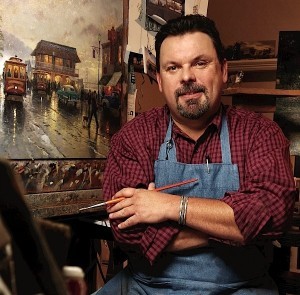

youtube
youtube
youtube
1 note
·
View note